Dragon Ball: The Road to Film 20 – Part V

Toei Animation seems to be pooling every available resource to make Dragon Ball Super: Broly the most action-packed, visually stunning film in the franchise to date, marking the 20th Dragon Ball film. I’ve been foaming at the mouth over the project since it was first announced, and it seems as good a time as any to look at the movies and TV specials leading up to this point. I will be covering every one to date, including two OVAs. I will however, be excluding the Toriko and One Piece crossover special as it’s focus is split between two other franchises. I will also be covering each in release order rather than where it may or may not fit arc-wise. For consistency’s sake, I’ll also be using dub terminology and names across the board, despite knowing the franchise in and out in both languages. These are less reviews and more quick reflections on what we’ve had up to this point.
Fusion Reborn
(The Rebirth of Fusion!! Goku and Vegeta)

Original release date: March 4, 1995
At last we’ve come to this. I was looking forward to this one. This is another fan-favorite. It and the film following  boast the best visuals Z ever had. We open on King Yemma’s check-in station, where a worker in charge of the machines that cleanse passing souls of evil energy is being negligent. Distracted by his music, the tanks overfill and explode. The resulting mass of energy then billows over him in a great cloud of smoke and mutates him into a giant, rotund creature which bends reality, trapping the check-in station in a distorted form. The result of which causes the borders separating Other World and Earth to fall apart, and the dead reemerge amongst the living, including old villains.
boast the best visuals Z ever had. We open on King Yemma’s check-in station, where a worker in charge of the machines that cleanse passing souls of evil energy is being negligent. Distracted by his music, the tanks overfill and explode. The resulting mass of energy then billows over him in a great cloud of smoke and mutates him into a giant, rotund creature which bends reality, trapping the check-in station in a distorted form. The result of which causes the borders separating Other World and Earth to fall apart, and the dead reemerge amongst the living, including old villains.

Goku, still being dead, is ordered by Grand Kai to investigate with Pikkon. They confront the creature, calling itself “Janemba”, in the now distorted, abstract remains of Hell. Vegeta also has his physical body back after his death thanks to the instability of the realm and he joins Goku in the fight while Pikkon attempts to find a way to free King Yemma. If The Legendary Super Saiyan was a more of a brutish onslaught, then Fusion Reborn is a lot more creative. Janemba, despite being a clear analog for Majin Buu, sports a great design and some of the most creative techniques to date. As the title implies (albeit incorrectly since fusion was still very much in use at the time), Goku and Vegeta eventually fuse to defeat the big bad. 
This actually marks one of the few appearances of Gogeta, the combination of the two characters via the Metamoran Fusion Dance. Fun fact, Toei’s plan to feature Gogeta in the film motivated Toriyama to go a completely different route in the manga. Hence, the creation of Vegito via the Potara earrings, despite the dance being established and set-up. It’s Lord Slug all over again. Although Gogeta’s appearance is short-lived and the conclusion is a little too quickly resolved when he comes up, this film is fun, visually stunning and varied from beginning to end. Amazing how the worst movie in the franchise is followed up by one of, if not the best of the original run.
Wrath of the Dragon
(Dragon Fist Explosion!! If Goku Won’t Do It, Who Will?)
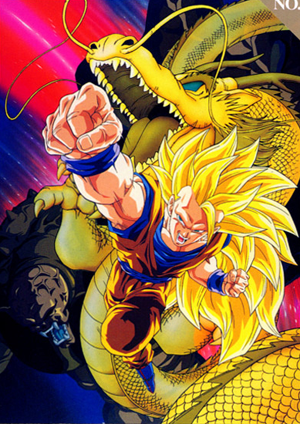
Original release date: July 15, 1995
 The last of the initial run of Z films. Fusion Reborn would’ve honestly been a better note to go out on, but this one ain’t bad. A giant beast is on its way to Earth, and a wizard named Hoi begs the Z-Warriors to free the mystical warrior Tapion from an ancient music box, as he is the only one capable of slaying the beast known as Hirudegarn. Not long after Tapion is freed, Hirudegarn’s lower half attacks West City. It is revealed that Tapion contains half of the beast within himself, and the music box was to ensure neither of them would escape. His younger brother Minotia
The last of the initial run of Z films. Fusion Reborn would’ve honestly been a better note to go out on, but this one ain’t bad. A giant beast is on its way to Earth, and a wizard named Hoi begs the Z-Warriors to free the mystical warrior Tapion from an ancient music box, as he is the only one capable of slaying the beast known as Hirudegarn. Not long after Tapion is freed, Hirudegarn’s lower half attacks West City. It is revealed that Tapion contains half of the beast within himself, and the music box was to ensure neither of them would escape. His younger brother Minotia  contained the other half, but was murdered at the beginning of the film.
contained the other half, but was murdered at the beginning of the film.
Dragon Ball’s never really delved into European-inspired high fantasy before, so the premise is pretty interesting. I think if the film didn’t meander a bit in the middle and if the win didn’t felt so contrived, it’d bump this one up a few places. Tapion is an interesting character, sort of a cross between Link and Crono on the design perspective, and works as a great older brother figure for Trunks. Amongst the films, this is probably the best use of one of the boys, as their relationship is a more interesting to watch than the usual comic relief.

The use of a kaiju villain is also unique, although I feel as if its second form is a little underwhelming compared to the first. Unlike Bojack though, that’s a little more up to preference. It’s also nice for Goku to take a backseat. He’s a walking talking win button at this point and the heart of the story is clearly between Tapion and Trunks, so he sort of sits in the background until the third act requires him to lift a finger. That’s a point of frustration as well, given he does it so easily. The finishing move is at least memorable.
This one… in a word… is fine. The character design and animation are again great, the story is unique and interesting, but the film’s 50 minute runtime does it no favors. There’s just simply not enough time for nuance here, at least not with this concept.
The Path to Power
(The Path to Ultimate Strength)

Original release date: March 4, 1996
 Oh, look. We’re back to the original Dragon Ball. This was a 10th Anniversary Film released around the time Dragon Ball GT just started. Only 4 episodes in, actually. As such, because Toei had a desire to advertise their newest series, Goku wears his GT outfit through the film and the ending song is the opening theme from that show as well. These are minor grievances, though. This film is pure Dragon Ball in a way that none of the other three were, and I love it. When we inevitably attempt to tackle this series in live-action again (and no, I’m not talking about that which must not be named), this is the example to which we can follow.
Oh, look. We’re back to the original Dragon Ball. This was a 10th Anniversary Film released around the time Dragon Ball GT just started. Only 4 episodes in, actually. As such, because Toei had a desire to advertise their newest series, Goku wears his GT outfit through the film and the ending song is the opening theme from that show as well. These are minor grievances, though. This film is pure Dragon Ball in a way that none of the other three were, and I love it. When we inevitably attempt to tackle this series in live-action again (and no, I’m not talking about that which must not be named), this is the example to which we can follow.
 It’s not perfect, however. It suffers from the same runtime issues as a lot of these and jumps around a bit. Being an anniversary film, this understandably retells the beginning of the series with brand new animation and minor changes, including those to make it a little closer to the manga, like Bulma having lavender-colored hair. This is a combined reimagining of the Pilaf and Red Ribbon arcs, and thankfully
It’s not perfect, however. It suffers from the same runtime issues as a lot of these and jumps around a bit. Being an anniversary film, this understandably retells the beginning of the series with brand new animation and minor changes, including those to make it a little closer to the manga, like Bulma having lavender-colored hair. This is a combined reimagining of the Pilaf and Red Ribbon arcs, and thankfully not overstuffed like Mystical Adventure was. On their own, those arcs seemly fairly separate from one another, but the hybrid they’ve made here is interesting. It feels like a genuine adaptation, unafraid to take risks in order to make a more consistent standalone project than to slavishly recreate the source to a T.
not overstuffed like Mystical Adventure was. On their own, those arcs seemly fairly separate from one another, but the hybrid they’ve made here is interesting. It feels like a genuine adaptation, unafraid to take risks in order to make a more consistent standalone project than to slavishly recreate the source to a T.
The art and animation on display here is often better than a lot of modern Dragon Ball, to be honest. There was a lot thrown into this. While it may alienate certain viewers that it’s yet another retelling, this is the only one for me that really nailed it, and felt like it had some passion and purpose. I know the score is a point of contention for hardcore fans, but I’m not so attached to Kikuchi’s original orchestration that I find it unfitting.
A Hero’s Legacy
(Goku’s Side Story! The Proof of his Courage is the Four-Star Ball!)

Original release date: March 26, 1997
Here we go. The only GT entry in the entire retrospective. I’m not being facetious, I actually like GT more than most. I know the series is the black sheep of the franchise but I’ve covered movies on here that are far worse. I could take or leave this special, though. It opens with a recap of Super Saiyan 4 Goku killing Baby. That will sound hilarious out of context. We then flash forward 100 years, where Pan is (unfortunately) the only living character left, raising her grandson Goku Junior. When she falls ill, Goku heads a trip to Mt. Paozu in order to get the Dragon Balls.
know the series is the black sheep of the franchise but I’ve covered movies on here that are far worse. I could take or leave this special, though. It opens with a recap of Super Saiyan 4 Goku killing Baby. That will sound hilarious out of context. We then flash forward 100 years, where Pan is (unfortunately) the only living character left, raising her grandson Goku Junior. When she falls ill, Goku heads a trip to Mt. Paozu in order to get the Dragon Balls.
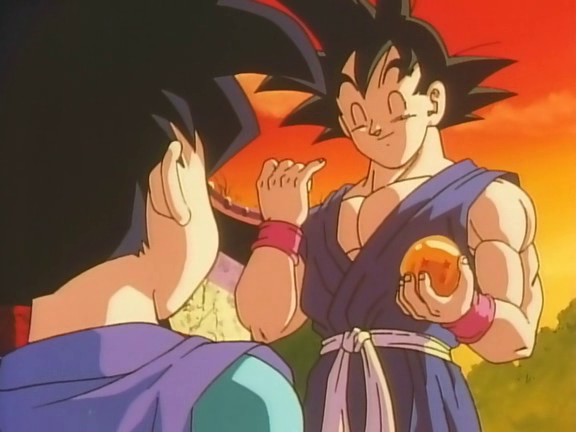 That’s pretty much it. Junior’s a sweet little boy so of course he runs into people who take advantage of his kindness, and he inevitably runs into some creatures who get in his way, and we find some contrived way to go Super Saiyan because of course we must. It just kind of exists. You wouldn’t really get much of a pay off to it until the end of GT proper. Even then, it’s not required to appreciate that ending.
That’s pretty much it. Junior’s a sweet little boy so of course he runs into people who take advantage of his kindness, and he inevitably runs into some creatures who get in his way, and we find some contrived way to go Super Saiyan because of course we must. It just kind of exists. You wouldn’t really get much of a pay off to it until the end of GT proper. Even then, it’s not required to appreciate that ending.
In retrospect, it seems Toei had an intended ending in their pocket pretty early on. This aired in the middle of the Super 17 arc and anyone who’s seen GT knows that doesn’t last long and there’s only one arc after that before it wraps up. In that, it’s interesting to see how they set it up ahead of time, especially given GT (despite its problems) boasts the best ending the series has had to date.
Yo! Son Goku and His Friends Return!
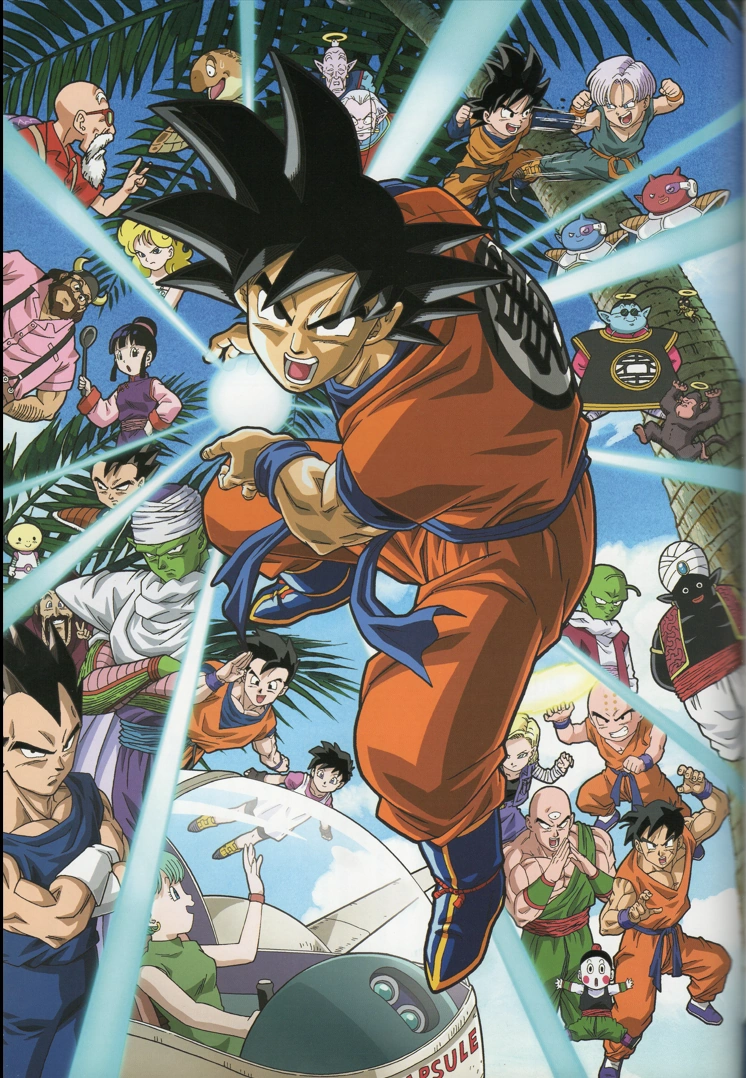
Original release date: September 21, 2008
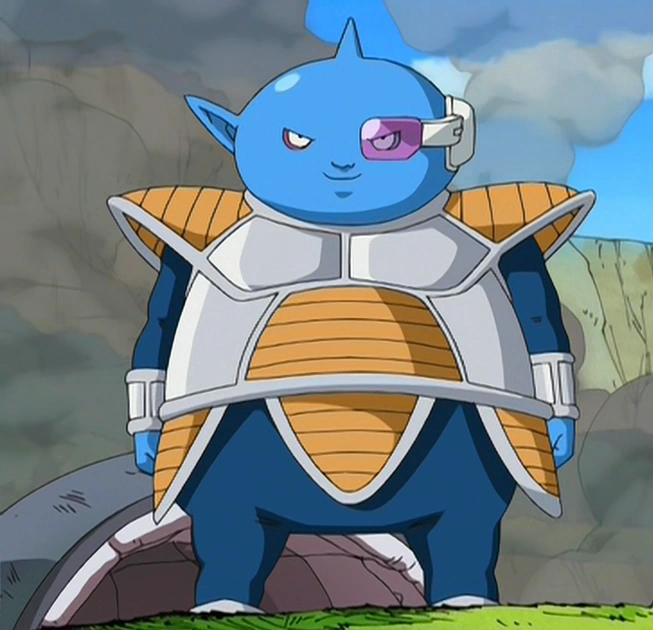 So, after Dragon Ball GT wrapped, the series was effectively dead for a long time. The
So, after Dragon Ball GT wrapped, the series was effectively dead for a long time. The 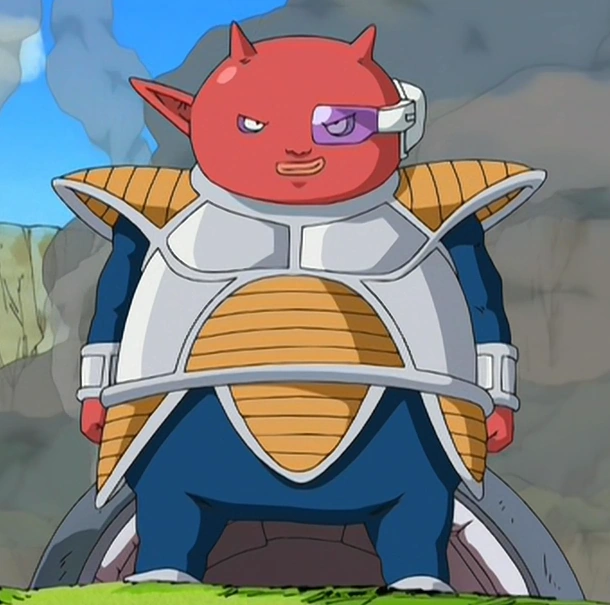 only thing that really kept it in the public consciousness were the video games. There had been no new material in 11 years. Although to be fair, it had only been 3 years on the American side thanks to belated license over here. Along comes the Jump Super Anime Tour, celebrating Weekly Shonen Jump’s 40th anniversary and with it, we get a brand new OVA (Original Video Animation). Taking place two years after Buu’s defeat, a hotel is being erected in Mr. Satan’s honor and a party is held with most of the major cast invited. The party is interrupted by the arrival or Tarble, Vegeta’s estranged younger brother. He’s arrived on Earth ahead of Abo and Cado, two of Frieza’s former soldiers, who ravaged his planet.
only thing that really kept it in the public consciousness were the video games. There had been no new material in 11 years. Although to be fair, it had only been 3 years on the American side thanks to belated license over here. Along comes the Jump Super Anime Tour, celebrating Weekly Shonen Jump’s 40th anniversary and with it, we get a brand new OVA (Original Video Animation). Taking place two years after Buu’s defeat, a hotel is being erected in Mr. Satan’s honor and a party is held with most of the major cast invited. The party is interrupted by the arrival or Tarble, Vegeta’s estranged younger brother. He’s arrived on Earth ahead of Abo and Cado, two of Frieza’s former soldiers, who ravaged his planet.
 Despite that major bombshell of Vegeta having a sibling we never knew about, this little special isn’t of much consequence. It’s fluff, but charming fluff. It was really just a cute little reunion, particularly for the Japanese, hence the title. It also boasts this nice pastel color palette and a lot of fanservice. At only 33 minutes, there’s not much to talk about, and it was never licensed in the west, but it came at a time where fans were kind of itching for some new content, as Battle of Gods was half a decade away.
Despite that major bombshell of Vegeta having a sibling we never knew about, this little special isn’t of much consequence. It’s fluff, but charming fluff. It was really just a cute little reunion, particularly for the Japanese, hence the title. It also boasts this nice pastel color palette and a lot of fanservice. At only 33 minutes, there’s not much to talk about, and it was never licensed in the west, but it came at a time where fans were kind of itching for some new content, as Battle of Gods was half a decade away.
The fact of the matter is, this OVA is pure Toriyama. He had a hand in writing the special and his sense of humor is present throughout. At a point where the series was effectively concluded, this was nice to see. Even beyond that novelty, as the series is in full force again, it’s still worth a peek.
Next time, we end this whole revisit.
